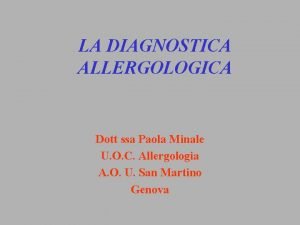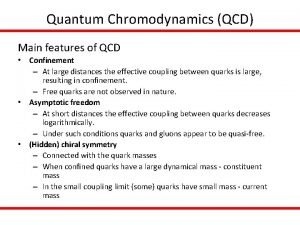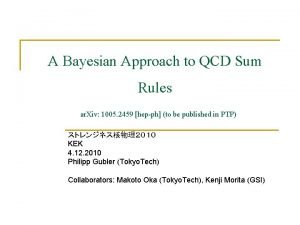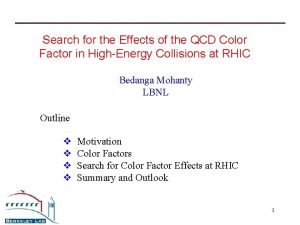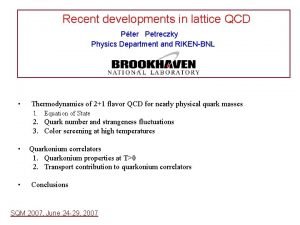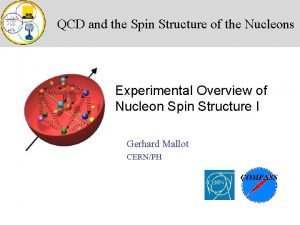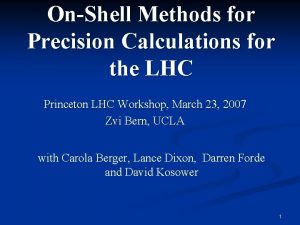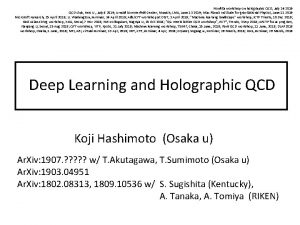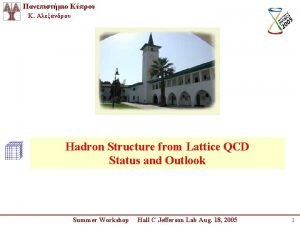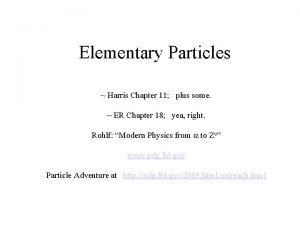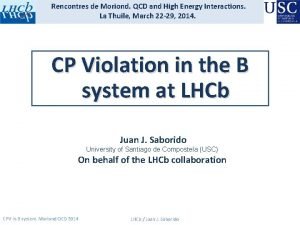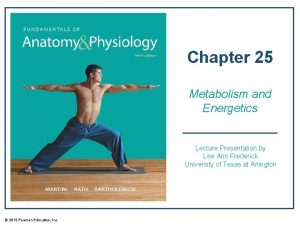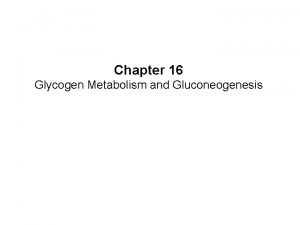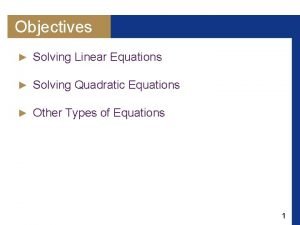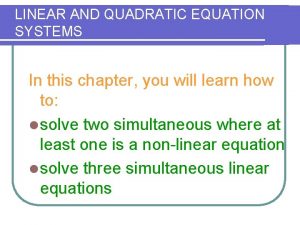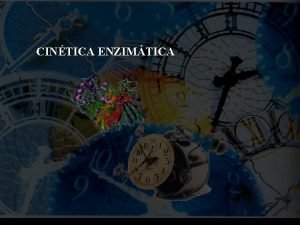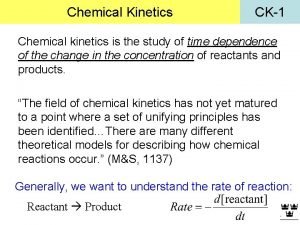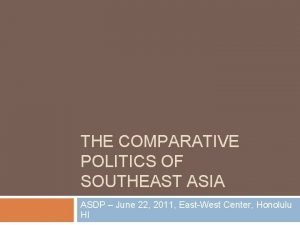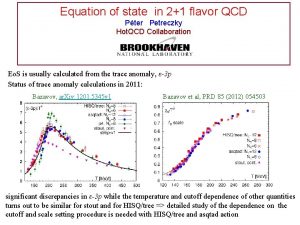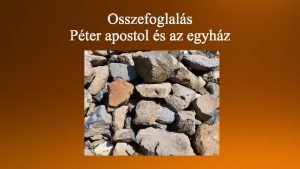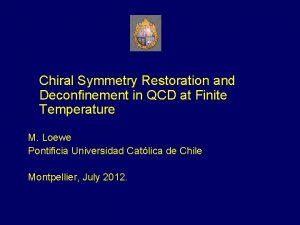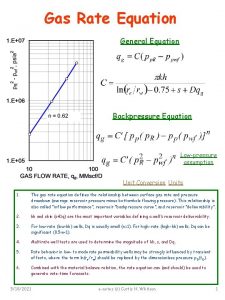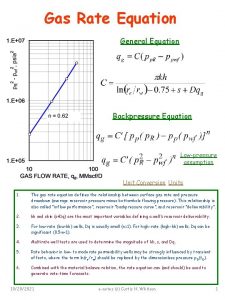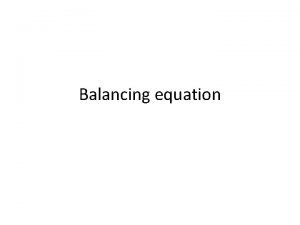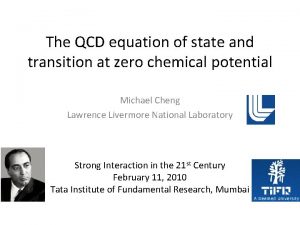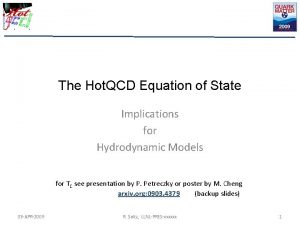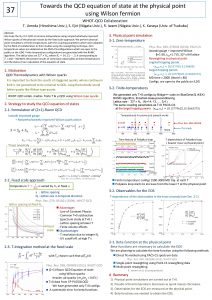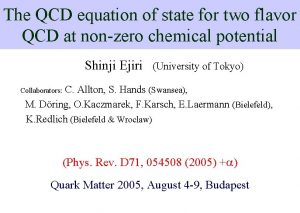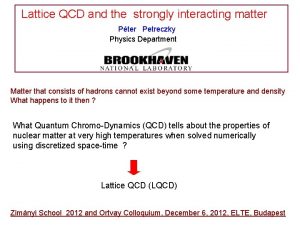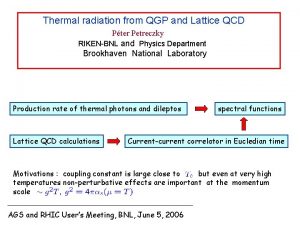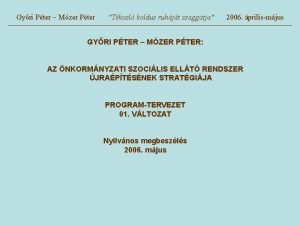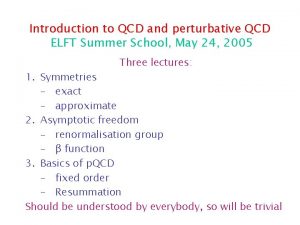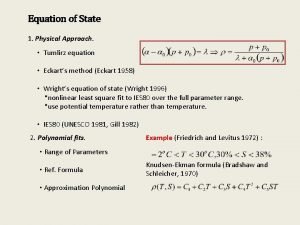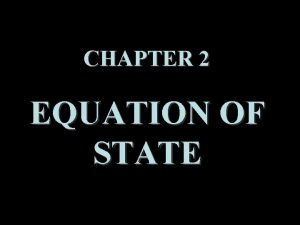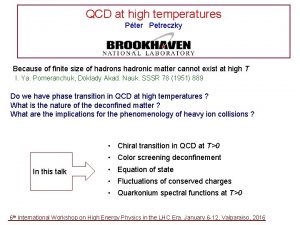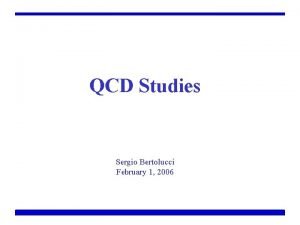Deconfinement and Equation of State in QCD Pter























- Slides: 23

Deconfinement and Equation of State in QCD Péter Petreczky What is deconfinement in QCD ? What is the nature of the deconfined matter ? Tools: screening of color charges, Eo. S, fluctuation of conserved quantum numbers QGP: state of strongly interacting matter for weakly interacting gas of quark and gluons ? EFT approach: EQCD Perturbative series is an expansion is in g and not αs Loop expansion breaks down at some order Problem : ISMD, October 4 -9, 2015 Magnetic screening scale: non-perturnative Lattice QCD

Lattice QCD at T>0 now and then Lattice QCD calculations at T>0 around 2002: for both chiral transition and deconfinement transition ( in terms of Polyakov loop) Problems: Continuum limit and physical masses are needed This task can be accomplished using improved staggered fermions actions: Highly Improved Staggered Quark (HISQ) Stout action Fluctuations of conserved charges: new look into deconfinement and QGP properties

The temperature dependence of chiral condensate Renormalized chiral condensate introduced by Budapest-Wuppertal collaboration With choice : Bazavov Phys. Rev. D 85 (2012) 054503; PRRD 87(2013)094505, Borsanyi et al, JHEP 1009 (2010) 073 • after extrapolation to the continuum limit and physical quark mass HISQ/tree calculation agree with stout results • strange quark condensate does not show a rapid change at the chiral crossover => strange quark do not play a role in the chiral transition

Deconfinement and color screening Onset of color screening is described by Polyakov loop (order parameter in SU(N) gauge theory) 2+1 flavor QCD, continuum extrapolated (work in progress with Bazavov, Weber …) free energy of static quark anti-quark SU(N) gauge theory ≠ QCD ! pair shows Debye screening at high temperatures Similar results with stout action Borsanyi et al, JHEP 04(2015) 138

Polyakov and gas of static-light hadrons Energies of static-light mesons: Free energy of an isolated static quark: Megias, Arriola, Salcedo, PRL 109 (12) 151601 Bazavov, PP, PRD 87 (2013) 094505 Ground state and first excited states are from lattice QCD Michael, Shindler, Wagner, ar. Xiv 1004. 4235 Wagner, Wiese, JHEP 1107 016, 2011 Higher excited state energies Gas of static-light mesons are estimated from potential model only works for T < 145 Me. V

The entropy of static quark At low T the entropy SQ increases reflecting the increase of states the heavy quark can be coupled to At high temperature the static quark only “sees” the medium within a Debye radius, as T increases the Debye radius decreases and SQ also decreases The onset of screening corresponds to peak is SQ and its position coincides with Tc

Casimir scaling of the Polyakov loop Instead of fundamental representations consider Polyakov loop Pn in arbitrary representation n PP, Schadler, ar. Xiv: 1509. 07874 Casimir scaling: free energy is proportional to qudratic Casimir operator Cn of rep n Expected in weak coupling expansion: e. g. at LO

Casimir scaling of the Polyakov loop (con’t) Casimir scaling holds for T>300 Me. V color screening like in weakly coupled QGP ?

Equation of state in the continuum limit Equation of state has be calculated in the continuum limit up to T=400 Me. V using two different quark actions and the results agree well Bazavov et al, PRD 90 (2014) 094503 Hadron resonance gas (HRG): Interacting gas of hadrons = non-interacting gas of hadrons and hadron resonances ( virial expansion, Prakash & Venugopalan ) HRG agrees with the lattice for T< 145 Me. V

How Equation of state changed since 2002 • Much smoother transition to QGP • The energy density keeps increasing up to 450 Me. V instead of flattening

Equation of State on the lattice and in the weak coupling The high temperature behavior of the trace anomaly is not inconsistent with weak coupling calculations (EQCD) for T>300 Me. V For the entropy density the continuum lattice results are below the weak coupling calculations For T< 500 Me. V At what temperature can one see good agreement between the lattice and the weak coupling results ?

QCD thermodynamics at non-zero chemical potential Taylor expansion : S hadronic quark Taylor expansion coefficients give the fluctuations and correlations of conserved charges, e. g. information about carriers of the conserved charges ( hadrons or quarks ) probes of deconfinement

Equation of state at non-zero baryon density and BNL-Bielefeld-CCNU Taylor expansion up to 4 th order for net zero strangeness Moderate effects due to non-zero baryon density up to Energy density at freeze-out is independent of

Deconfinement : fluctuations of conserved charges baryon number electric charge strangeness Ideal gas of massless quarks : conserved charges carried by light quarks Hot. QCD: PRD 86 (2012) 034509 BW: JHEP 1201 (2012) 138, conserved charges are carried by massive hadrons

Deconfinement of strangeness Partial pressure of strange hadrons in uncorrelated hadron gas: Strange hadrons are heavy treat them As Boltzmann gas should vanish ! • v 1 and v 2 do vanish within errors at low T • v 1 and v 2 rapidly increase above the transition region, eventually reaching non-interacting quark gas values Bazavov et al, PRL 111 (2013) 082301

Quark number fluctuations at high T At high temperatures quark number fluctuations can be described by weak coupling approach due to asymptotic freedom of QCD quark number fluctuations quark number correlations EQCD • Lattice results converge as the continuum limit is approached • Good agreement between lattice and the weak coupling approach for 2 nd and 4 th order quark number fluctuations as well as for correlations Bazavov et al, PRD 88 (2013) 094021, Ding et at, ar. Xiv: 1507. 06637

What about charm hadrons ? Bazavov et al, Phys. Lett. B 737 (2014) 210 Charm baryon to meson pressure only |C|=1 sector contributes In the hadronic phase all BC-correlations are the same ! Hadronic description breaks down just above Tc open charn deconfines above Tc The charm baryon spectrum is not well known (only few states in PDG), HRG works only if the “missing” states are included

Quasi-particle model for charm degrees of freedom Charm dof are good quasi-particles at all T because Mc>>T and Boltzmann approximation holds Partial meson and baryon pressures described by HRG at Tc and dominate the charm pressure then drop gradually, charm quark only dominant dof at T>200 Me. V Partial pressures drop because hadronic cxcitations become broad at high temperatures (bound state peaks merge with the continuum) Mukherjee, PP, Sharma, ar. Xiv: 1509. 08887 See Jakovac, PRD 88 (‘ 13), 065012 Biro, Jakovac, PRD(’ 14)065012 Vice versa for quarks

Summary • The deconfinement transition temperature defined in terms of the free energy of static quark agrees with the chiral transition temperature for physical quark mass • Equation of state are known in the continuum limit up to T=400 Me. V at zero baryon density and the effect of non vanishing baryon densities seem to be moderate. • Hadron resonance gas (HRG) can describe various thermodynamic quantities at low temperatures • Deconfinement transition can be studied in terms of fluctuations and correlations of conserved charges, it manifest itself as a abrupt breakdown of hadronic description that occurs around the chiral transition temperature § Charm hadrons can exist above Tc and are dominant dof for T<180 Me. V • For T > (300 -400) Me. V weak coupling expansion works well for certain quantities (e. g. quark number susceptibilities), more work is needed to establish the connection between the lattice and the weak coupling results • Comparison of lattice and HRG results for certain charm correlations hints for existence of yet undiscovered excited baryons

Back-up:

Domain wall Fermions and UA(1) symmetry restoration Domain Wall Fermions, Bazavov et al (Hot. QCD), PRD 86 (2012) 094503 chiral: Peak position roughly agrees with previous staggered results axial: axial symmetry is effectively restored T>200 Me. V !

Improved staggered calculations at finite temperature low T region T<200 Me. V cutoff effects are different in : a>0. 125 fm hadronic degrees of freedom for #flavors < 4 improvement of the flavor symmetry rooting trick is → fat links important p 4, asqtad, HISQ, stout high-T region T>200 Me. V a<0. 125 fm quark degrees of freedom quark dispersion relation

The Highly Improved Staggered Quark (HISQ) Action two levels of gauge field smearing with re-unitarization Follana et al, PRD 75 (07) 054502 projection onto U(3) improves flavor symmetry Hasenfratz, ar. Xiv: hep-lat/0211007 asqtad 3 -link (Naik) term to improve the quark dispersion relation + asqtad smearing
 Anticorpi monoclonali poliposi nasale
Anticorpi monoclonali poliposi nasale Confinement qcd
Confinement qcd Qcd sum rules
Qcd sum rules Color factor qcd
Color factor qcd Qcd
Qcd Qzcdsam
Qzcdsam Qcd lagrangian
Qcd lagrangian Qcd
Qcd Qcd penrose
Qcd penrose Qcd
Qcd Qcd
Qcd Qed qcd qfd
Qed qcd qfd Rencontres de moriond
Rencontres de moriond State graphs in software testing
State graphs in software testing Absorptive state vs postabsorptive state
Absorptive state vs postabsorptive state Gluconeogenesis and glycogenolysis
Gluconeogenesis and glycogenolysis State state graphs and transition testing
State state graphs and transition testing Eyring equation and arrhenius equation
Eyring equation and arrhenius equation Linear equation and quadratic equation
Linear equation and quadratic equation Linear combinations method
Linear combinations method Eyring equation
Eyring equation Eyring equation and arrhenius equation
Eyring equation and arrhenius equation Liquid state of matter properties
Liquid state of matter properties State to state regionalism
State to state regionalism
